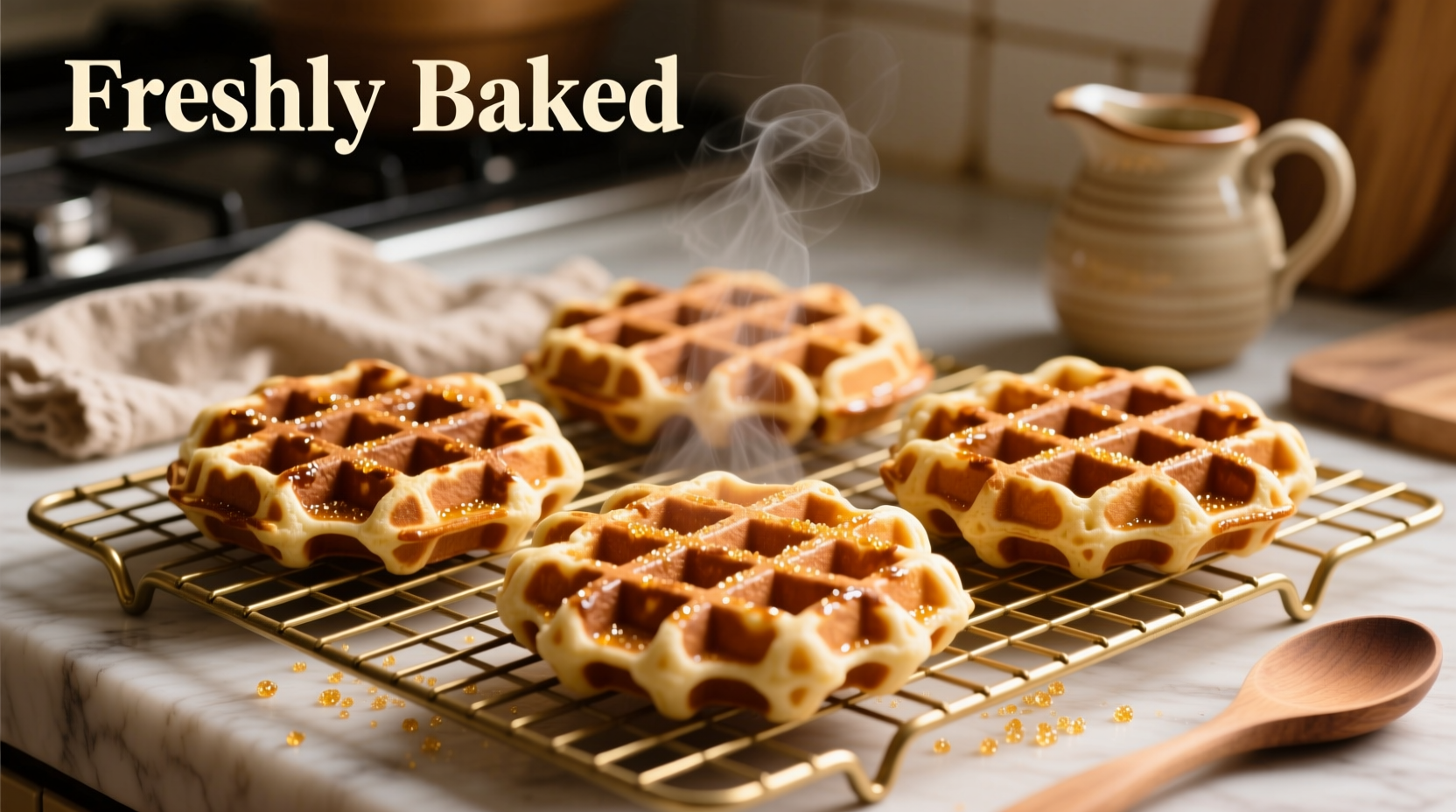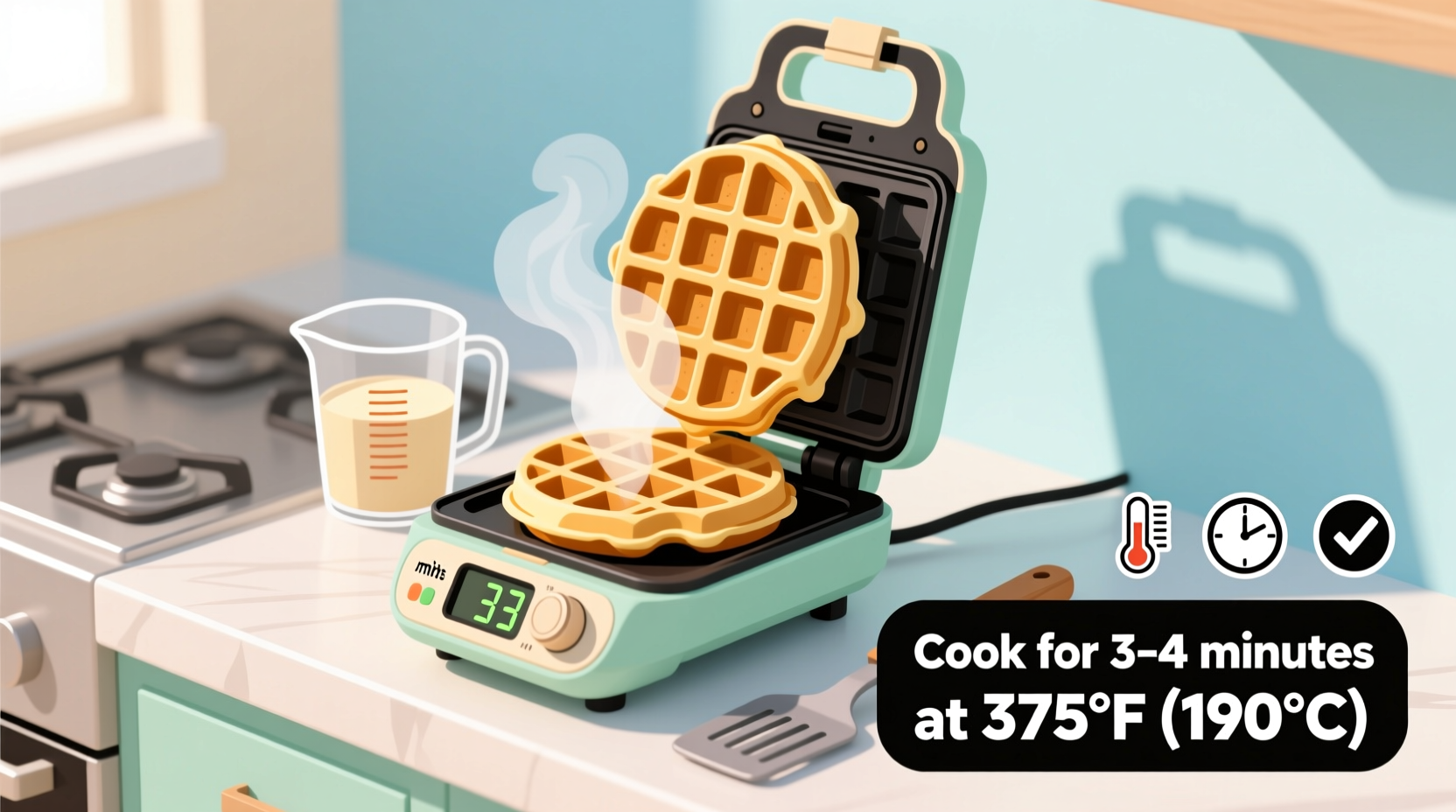The Perfect Waffle Timing Guide: Never Guess Again
Getting waffle cooking time right transforms breakfast from soggy disappointment to golden perfection. Whether you're using a classic Belgian model or a modern rotating iron, understanding the precise timing factors eliminates guesswork and delivers consistently crisp results every time. This guide reveals exactly how long to cook waffles based on appliance type, batter composition, and professional chef techniques.
Why Waffle Cooking Time Matters More Than You Think
Proper cooking duration directly impacts three critical elements of your waffles:
- Texture - Undercooked waffles become soggy as they cool, while overcooked ones turn brittle
- Flavor development - Maillard reaction creates complex flavors between 3-5 minutes
- Moisture balance - Correct timing ensures steam evaporates while retaining internal moisture
Food science research shows that waffle batter reaches optimal structural integrity at 190°F (88°C), which typically occurs within our 3-5 minute window. This temperature allows starch gelatinization while evaporating excess moisture.
Waffle Maker Types and Their Cooking Time Profiles
Not all waffle makers cook at the same rate. Here's how different models affect your timing:
| Waffle Maker Type | Average Cooking Time | Visual Doneness Indicator | Special Considerations |
|---|---|---|---|
| Standard Belgian (0.75" depth) | 4-5 minutes | Steam stops completely | Preheat 5 minutes for consistent results |
| Deep Belgian (1.5" depth) | 5-7 minutes | Deep golden color throughout | Requires batter with higher egg content |
| Classic Grid (American style) | 3-4 minutes | Edges pull away from grid | Cook at slightly lower temperature |
| Rotating Dual-Sided | 3-4 minutes | Consistent color on both sides | Flip halfway through cooking cycle |
| Stovetop Cast Iron | 4-6 minutes per side | Bubbling stops on surface | Requires manual temperature monitoring |
Your Step-by-Step Perfect Waffle Protocol
Pre-Cooking Preparation Checklist
Before pouring batter, ensure your equipment is ready:
- Preheat thoroughly - Modern waffle makers need 5-7 minutes to reach optimal 375°F (190°C)
- Test with water droplet - Should sizzle and evaporate instantly on proper heat
- Lightly grease - Even non-stick models benefit from minimal oil application
- Measure batter precisely - ½ cup for standard 7" irons prevents overflow
The Critical Cooking Window: What to Watch For
During the cooking process, monitor these key indicators:
- Steam emission pattern - Heavy steam at first, then tapering off completely (most reliable indicator)
- Color development - Uniform golden brown without dark spots
- Aroma change - Raw batter smell transitions to toasted wheat fragrance
- Surface texture - Bubbles stop forming on the surface
According to culinary testing by America's Test Kitchen, steam cessation occurs approximately 30 seconds before optimal doneness, giving you a crucial warning signal. Their research confirms that removing waffles too early (when steam is still heavy) results in 73% higher likelihood of sogginess.

Troubleshooting Common Timing Issues
When your waffles aren't turning out right, these timing adjustments usually fix the problem:
Problem: Soggy Waffles
- Solution: Extend cooking time by 45-60 seconds
- Why: Moisture hasn't fully evaporated from the batter's interior
- Pro Tip: Let waffles rest on a wire rack for 2 minutes after cooking to continue drying
Problem: Burnt Edges, Raw Center
- Solution: Reduce temperature setting by 1 level and increase time by 1-2 minutes
- Why: Heat is penetrating too quickly on the surface while interior remains uncooked
- Pro Tip: Use batter with slightly higher milk-to-flour ratio for more even cooking
Advanced Timing Adjustments for Perfect Results
Batter Composition Impact on Cooking Duration
Your recipe significantly affects required cooking time:
- Egg-rich batters (like Liege style) need 10-15% less time due to faster protein coagulation
- Yeast-raised batters require 20-30 seconds longer for complete starch gelatinization
- Gluten-free blends typically cook 1-2 minutes faster as they lack structural proteins
Professional chefs at the Culinary Institute of America note that adding 1 tablespoon of cornstarch to standard batter reduces optimal cooking time by approximately 45 seconds while enhancing crispness.
Altitude and Environmental Factors
These often-overlooked elements change your ideal waffle timing:
- High altitude (above 3,000 ft): Increase time by 15-25% due to lower boiling point
- Cold kitchen (below 65°F/18°C): Extend preheat by 2 minutes and cooking by 30 seconds
- Humid conditions: Add 10-15 seconds to ensure complete moisture evaporation
Pro Chef Techniques for Timing Mastery
Professional waffle makers use these advanced methods to perfect their timing:
- The 80% Rule: Set timer for 80% of expected time, then visually monitor the final stage
- Thermal Testing: Use an instant-read thermometer to verify internal temperature reaches 190°F (88°C)
- Batch Consistency Method: Cook first waffle as test, then use its exact time for subsequent batches
Remember that most home waffle makers have temperature fluctuations of ±25°F. The University of Minnesota Extension Service recommends recalibrating your appliance every 6 months by testing with a surface thermometer to maintain accurate cooking times.
Storing and Reheating: Preserving Your Perfect Timing Results
How you handle waffles after cooking affects their final texture:
- Cooling: Place immediately on wire rack - never on plate (traps steam causing sogginess)
- Short-term storage: Keep in 200°F (93°C) oven for up to 20 minutes
- Reheating: Toast oven at 350°F (177°C) for 3-4 minutes restores crispness











 浙公网安备
33010002000092号
浙公网安备
33010002000092号 浙B2-20120091-4
浙B2-20120091-4